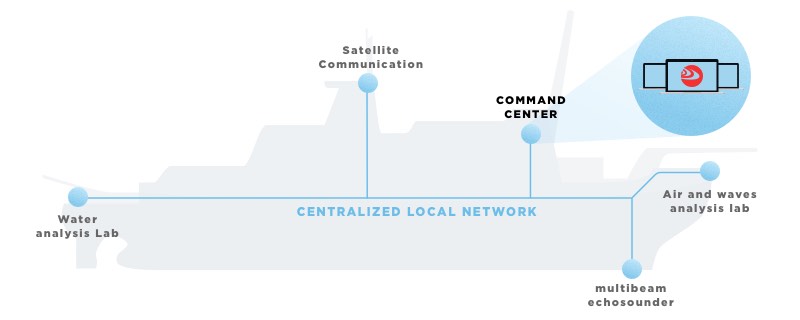Technological advances are made to modern vessels every year. Vessel management software has made it possible for remote interaction with many of the modern devices. Navigation, deep-sea research, and many of the vessel’s operational tasks can be monitored and controlled remotely. Crew members are trained to use ship maintenance software and the specialized equipment required for the safe operation of their vessel. The living and working condition of the modern seaman have been radically altered by the introduction of automation and mechanization to the shipping industry.
- Surveying and exploration: locating and observing sunken objects, monitoring of underwater structures and communication;
- Under-ice operations: installing cables and pipelines as well as maintaining the necessary lighting systems;
- Oceanographic research: monitoring of ocean temperatures and currents;
- Exploration and development of underwater oil and gas reserves;
- Geological exploration: Seabed mapping through photo, video and acoustic profiling, topographic inspection;
- Ecological monitoring: study of ecosystem damage and populations of marine life;
- Military applications: surveillance, placement of underwater mines, and other automated military functions.
The process of developing data collection technology for military, commercial, and research vessels is time-consuming and complex. To provide effective data collection and analysis, ships need to be outfitted with a many pieces of specialized equipment. Communication with these devices is usually enacted through serial RS232 and RS485 connections. Transfer of data around the vessel would entail the installation of miles of cables. This is an inefficient solution due to the inflexibility of the cables as well as the time and cost of installation.
An alternative to hard-wiring networks of cables to enable remote operation of critical equipment is to employ Eltima Port Virtualization Technology. This addition to your shipping software offers advanced functionality that lets you access, monitor and manage any serially attached piece of equipment remotely.
Serial port virtualization technology can be added to the firmware of specific shipping equipment or integrated into any vessel’s software configuration. This software solution will run on any operating system and allows you to redirect unlimited serial devices over UDP or TCP/IP networks.
Major benefits can be obtained by the integration of Eltima Port Virtualization Technology (EPVT) with your vessel software.
-
EPVT expands the functionality of specialized equipment and vessel maintenance software by providing wireless communication with COM port devices over any distance.
-
Use of this unique port virtualization functionality enables you to cover new market segments and gain a competitive advantage over other vessel software providers.
-
EPVT supports all kinds of vessel management software and is customizable to meet any specific requirements of your particular application.
